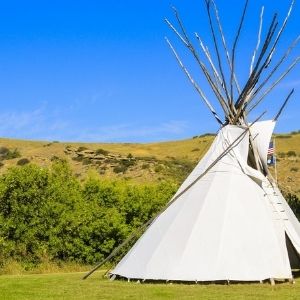Missouri Headwaters State Park
Missouri Headwaters State Park

Missouri Headwaters State Park is just outside of Three Forks downtown and only 35 minutes outside of Bozeman. The convergence of the Jefferson, Madison, and Gallatin rivers is the start of the longest river in North America, the Missouri River. Considered an essential part of the geography of the western U.S.
We are able to bring you valuable information about this amazing state park thanks to the support of:
Things to do:
Just outside of Three Forks, you’ll find Missouri Headwaters State Park, the confluence of the Madison, Jefferson and Gallatin rivers which form the 2,300 mile Missouri River.
At Missouri Headwaters State Park, you can still find the area looking much as it did historically - with much of the region's abundant wildlife, vegetation, and scenic beauty preserved - making it clear what has attracted people for thousands of years.
- Looking to camp in history? There are 17 campsites available and you can even rent a tipi!
- Interpretive displays describing the area’s cultural and natural history can be found to help guide you!
- Take your bike for a spin on the many trails throughout the park!
- Not much of a biker? Use the trails for a scenic hike instead!
- Take a float down the river, you’ll have your choice of three!
- Visit Fort Rock to take a look at historic pictographs.
The three rivers that converge to form the Missouri River are named for President Thomas Jefferson, Secretary of State James Madison and Treasury Secretary Albert Gallatin!
The rich, fertile soil along with the proximity to fresh water, brought the Flathead, Bannock and Shoshone Indians to the region and later trappers and settlers, and now this beautiful land has been preserved as a state park for visitors just like you.
Known for an abundance of wildlife, Missouri Headwaters State Park is a great place to explore, but don’t forget your bug spray!
In addition to its vast natural resources and outdoor activities, Missouri Headwaters State Park also boasts extensive cultural history - ranging from the tribes that lived there beginning 3,000 years ago to Lewis and Clark to fur traders to settlers.
In late July 1805, William Clark and a small number from the Corps of Discovery reached the Headwaters while scouting for Shoshone Indians, whom they hoped would sell them horses. It was Sacajawea, who recognized the area as where she was captured as a child by the Hidatsa, that led the expedition successfully there.
While at the confluence, Clark left a note for Meriwether Lewis to find and later, Lewis Rock was named for him.

Curious what other visitors have had to say about the park?

Park
Open Year-Round
Campground
Open Year-Round
Location
1585 Trident Road
Three Forks, MT 5975
Missouri Headwaters State Park Read More »














































